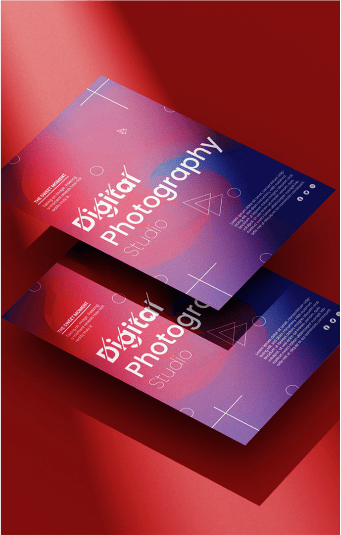The increasing pace of digital transformation requires marketing and communications agencies to stay flexible and accurate when introducing new ideas. Without a structured approach for setting up, testing, and refining new initiatives, even the most innovative campaigns can run into delays or lack desired outcomes. Design thinking is an iterative process that helps create consistent solutions with fewer design issues by encouraging rapid prototyping, user feedback loops, and experimentation. In this blog post, we’ll take a closer look at how a design thinking-driven system can provide valuable insights that help agencies compete more effectively in today’s complex media landscape.
What is Design Thinking and How Can it Help Agencies Innovate with Greater Precision
Design thinking is a problem-solving approach that aims to provide an innovative solution to complex issues. It is a human-centered design process that puts the user at the center of every decision-making process. This approach encourages creativity and encourages an open-minded approach to problem-solving. Agencies can benefit from the design thinking process as it allows them to produce solutions that are tailored to the needs of their users. It provides agencies with a more precise approach to innovation by eliminating guesswork and assumptions. By putting the user first, agencies can develop solutions that are more intuitive and provide a better user experience. With design thinking, agencies can learn and adapt to the needs of their users as they evolve, leading to more successful outcomes.

Developing Creativity Through Design Thinking
Design thinking is a strategic approach that has become increasingly popular in recent years for good reason. It allows agencies to innovate with greater precision by using a creative problem-solving methodology to develop solutions that better meet the needs of their targeted audience. This methodology helps businesses to approach problems systematically and creatively, considering various perspectives and factors rather than jumping straight into solutions. The process focuses on empathy and understanding the needs of the audience, challenging assumptions and testing ideas before moving to implementation. As design thinking becomes more embedded in the culture of an agency, it fosters a mindset that encourages innovation and creativity among its team members. By using design thinking, agencies can better align their services with their customers’ needs, improve user experiences, and ultimately create a competitive advantage in the marketplace.
Analyzing the Problem and Generating Ideas
Design thinking is an innovative approach, therefore, it can help agencies generate ideas and solve problems with greater precision. This process involves analyzing the problem from all angles, considering potential solutions that may initially seem unconventional or even counterintuitive, and ultimately designing a practical and effective solution that meets the needs of all stakeholders. By engaging in design thinking, agencies can drive innovation while minimizing risk and uncertainty. Moreover, this problem-solving approach enables teams to work collaboratively, leveraging diverse perspectives and expertise to arrive at the best possible solution. Ultimately, design thinking empowers agencies to create better products and services that truly meet the needs of their clients and constituents.
Analyzing the Problem and Generating Ideas
Design thinking also involves analyzing the problem from all angles, considering potential solutions that may initially seem unconventional or even counterintuitive, and ultimately designing a practical and effective solution that meets the needs of all stakeholders. By engaging in design thinking, agencies can drive innovation while minimizing risk and uncertainty. Moreover, this problem-solving approach enables teams to work collaboratively, leveraging diverse perspectives and expertise to arrive at the best possible solution. Ultimately, design thinking empowers agencies to create better products and services that truly meet the needs of their clients and constituents.
Prioritizing Possible Solutions and Testing Them Out
By prioritizing possible solutions and testing them out, design thinking can help eliminate the guesswork and reduce the risk of failure. Instead of relying on instinct, agencies are encouraged to draw upon user feedback and insights to develop solutions that meet the needs of their audience. With design thinking, innovation becomes more targeted and deliberate, allowing agencies to achieve greater results with fewer resources. By fostering a culture of experimentation and exploration, design thinking can help agencies stay ahead of the curve and create impactful solutions that make a difference.
Acting on Ideas and Implementing Change
Innovation is key to the success of any agency, but coming up with fresh, effective ideas can be a challenge. That’s where design thinking comes in. By putting the needs of the user at the forefront, this process encourages creativity and collaboration and can lead to more precise, actionable innovations. However, it’s not just about generating ideas; design thinking also emphasizes the importance of implementing change. By testing and iterating on solutions, agencies can ensure that their innovations are not only effective but also sustainable in the long run. With design thinking, agencies can unlock their full potential for innovation and make a meaningful impact.
Measuring Success and Future Potential of Design Thinking
Design thinking has become increasingly popular in design agencies and for good reason. This innovative approach to problem-solving allows for a more creative and user-centered approach to design. But how do we measure its success and future potential? It’s not as simple as looking at numbers and metrics. Success in design thinking can be measured by the impact it has on users, the level of collaboration and innovation it fosters within teams, and the overall improvement in the quality and effectiveness of the designs produced. Looking to the future, design agencies that embrace design thinking are likely to stay ahead of the curve and continue to produce cutting-edge solutions for their clients. It is a powerful tool that has the potential to drive businesses forward and make a positive impact on society as a whole.
Identifying Areas for Improvement to Increase Efficiency
Design agencies are constantly striving to improve their efficiency and output to make the most of their time and resources. One proven method to achieve this goal is through the use of design thinking. By identifying the areas that need improvement and analyzing them from every angle, designers can create innovative solutions that increase their productivity and effectiveness. This approach goes beyond simply looking at the surface level and delves deep into the root cause of problems. With design thinking, design agencies can change the way they work for the better, allowing them to deliver top-quality work to their clients at a more efficient pace.
Establishing Set Goals and Outlining Steps for Agency Improvement
Design thinking is a powerful tool for agencies seeking to improve their operations and achieve their goals. By drawing on principles of creativity, empathy, and experimentation, agencies can develop new ways of approaching challenges and innovating for the future. Effective design thinking requires a clear understanding of the desired outcomes and a focus on actionable steps for making progress. With a commitment to ongoing learning and improvement, agencies can harness the power of design thinking to achieve breakthrough results and create better outcomes for the people they serve. Whether seeking to enhance service delivery, streamline operations, or tackle complex social issues, design thinking offers a powerful framework for achieving agency goals and driving positive change.
Adopting a Design-Thinking Mindset to Make Better Decisions
When faced with a challenging problem, it’s easy to get stuck in a linear way of thinking. However, by adopting a design-thinking mindset, you can break out of that mold and approach the situation from a more creative and innovative perspective. A design-thinking mindset encourages you to consider multiple solutions, empathize with those impacted by the problem, and iterate on your ideas until you find the best solution. By doing so, you’ll not only make better decisions for yourself but also for those around you. So the next time you’re faced with a problem, consider adopting a design-thinking mindset to help you navigate through it with greater ease and creativity.
Conclusion
Design Thinking can be an invaluable tool for agencies who want to stay competitive in their industry and make progress. Taking the necessary steps towards adopting this mindset into your organizational culture could result in improved team collaboration, creative solutions, and measurable success. Additionally, it’s true that identifying areas of improvement and setting actionable goals can lead to better outcomes for your branding agency and its stakeholders. The discipline of Design Thinking should not be taken lightly though – implementing it takes time and collective effort from all the members of an organization. However, with patience and determination, Design Thinking can help agencies achieve more efficient ways of doing things allied with more innovative results at the same time. Agencies that are willing to incorporate these practices into their everyday operations will have a much greater chance of succeeding in our ever-changing world.





